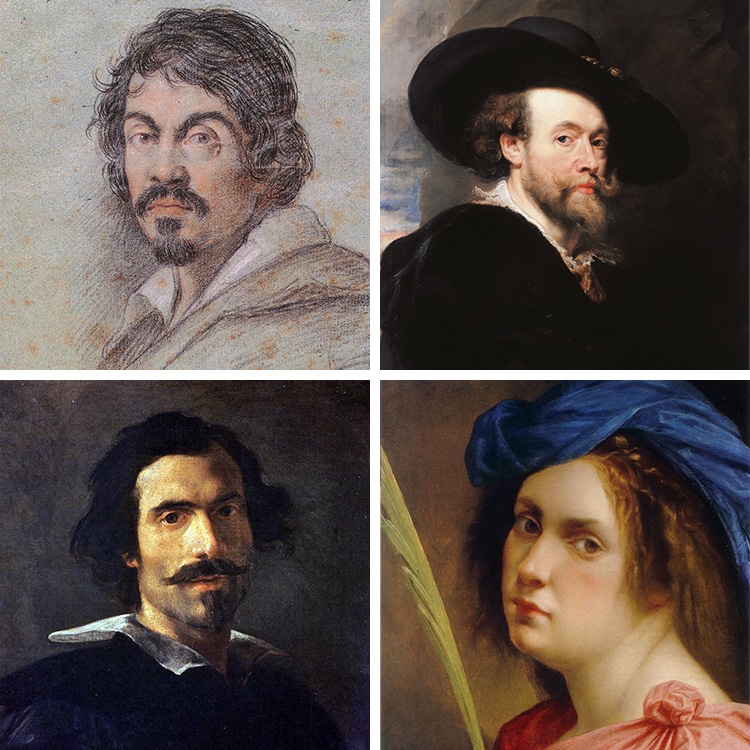
In the 17th century, a new art style captivated Europe. Known as the Baroque period, this era emphasized lavishness and drama. And while there were numerous artists who made up this cultural movement, some stand out from the rest.
Here, we will take a look at famous Baroque artists who left their mark on the style. Caravaggio, for instance, pioneered the dramatic approach to painting that uses intense contrasts and singular sources of light. Similarly, Gian Lorenzo Bernini singlehandedly translated Baroque ideals into innovative and dynamic sculptures rooted in strong emotions.
Scroll down to learn about 10 famous Baroque artists who pioneered the style.
Discover 10 Famous Baroque Artists Who Pioneered the Style
Annibale Carracci (1560–1609)
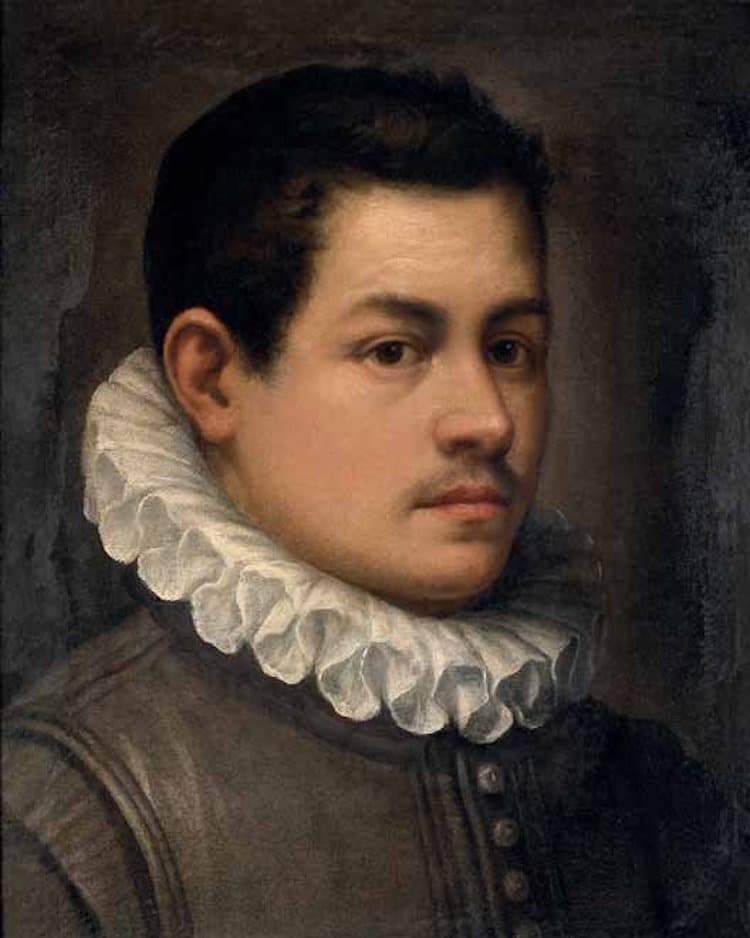
Annibale Carracci, “Self-Portrait,” c. 1580 (Photo: Wikimedia Commons, Public domain)
|
Full Name
|
Annibale Carracci
|
|
Born
|
November 3, 1560 (Bologna, Italy)
|
|
Died
|
July 15, 1609 (Rome, Italy)
|
|
Notable Artwork
|
Domine, quo vadis?, The Lamentation of Christ
|
|
Movement
|
Baroque
|
Although his art became overshadowed by Caravaggio’s over time, Annibale Carracci (1560–1609) was regarded as one of the leading Baroque painters. His style resembled some of the idealism of the Renaissance and Mannerist styles, but he created Baroque-like drama through monumental figures and dynamic compositions. In addition, Carracci’s body of work was incredibly diverse and included landscapes, genre scenes, and portraits.
Famous works of art: Domine, quo vadis? (1602), The Lamentation of Christ (c. 1604)
Caravaggio (1571–1610)
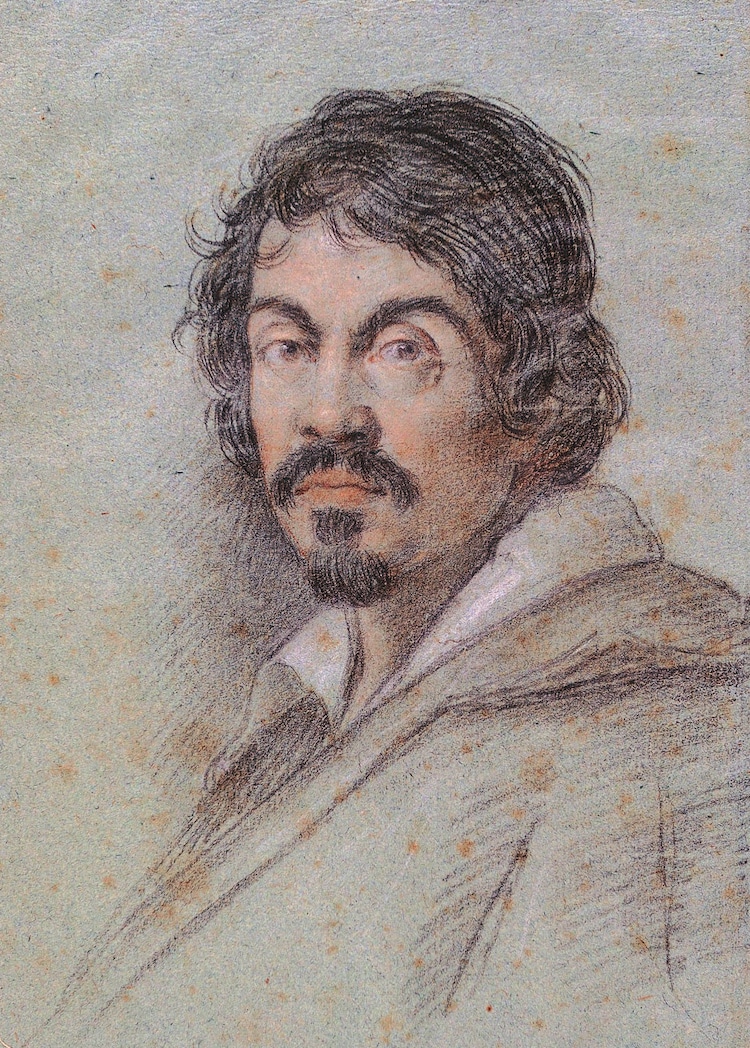
Ottavio Leoni, “Portrait of Caravaggio,” c. 1621 (Photo: Wikimedia Commons, Public domain)
|
Full Name
|
Michelangelo Merisi da Caravaggio
|
|
Born
|
September 29, 1571 (Milan, Italy)
|
|
Died
|
July 18, 1610 (Porto Ercole, Italy)
|
|
Notable Artwork
|
David with the Head of Goliath, The Calling of St. Matthew
|
|
Movement
|
Baroque
|
Italian artist Michelangelo Merisi—better known as Caravaggio (1571–1610)—was a prominent 17th-century painter whose dramatic style had a profound impact on Baroque painting. He utilized an intense contrast of light and dark, dynamic action poses, and figures based on real people to create powerful paintings with an intense psychological atmosphere.
Famous works of art: The Calling of Saint Matthew (c.1599–1600), Crucifixion of Saint Peter (1600), David with the Head of Goliath (1610),
Peter Paul Rubens (1577–1640)
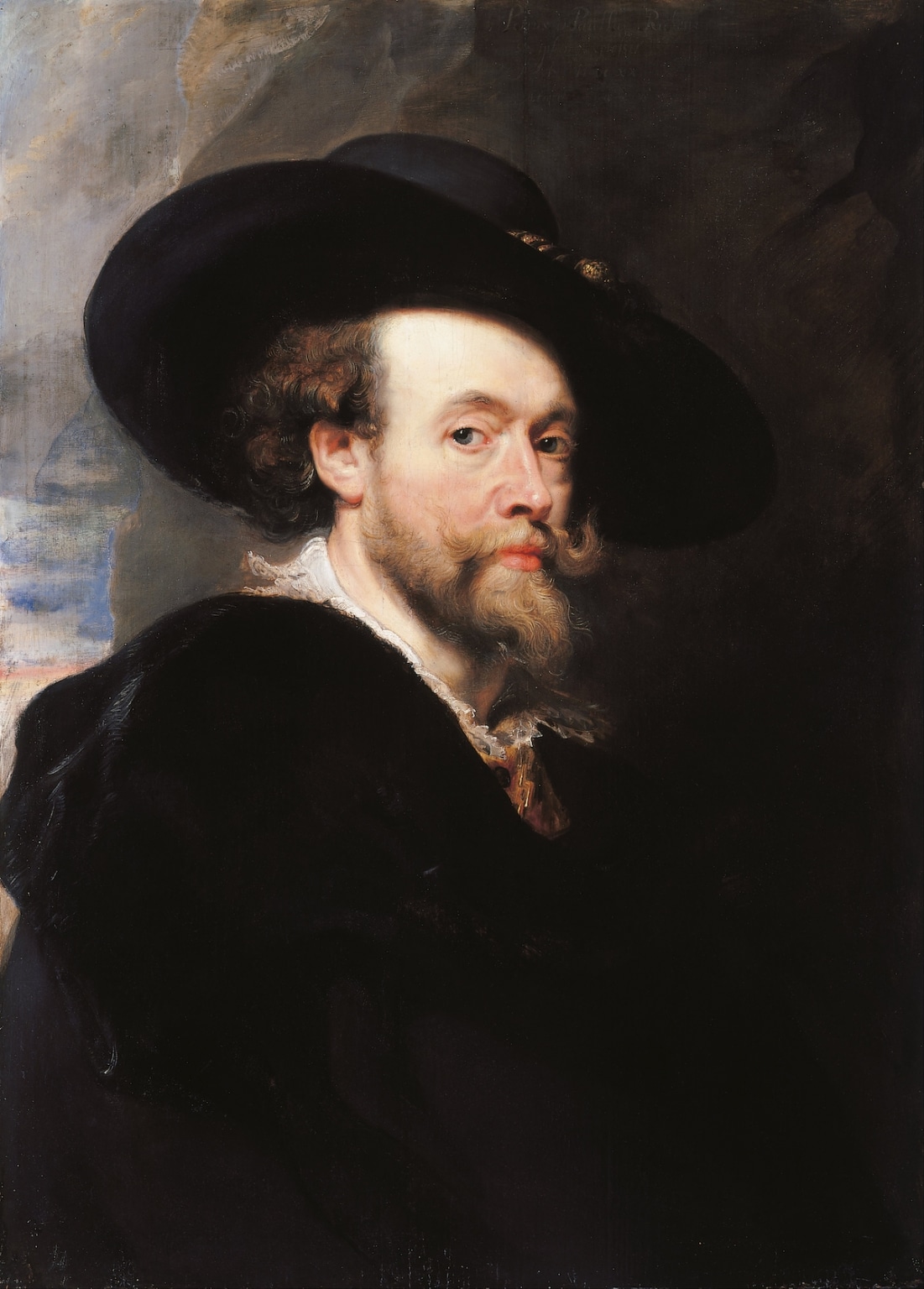
“Portrait of the Artist,” oil on panel, 1623. (Photo: Public Domain, via Wikimedia Commons.)
|
Full Name
|
Sir Peter Paul Rubens
|
|
Born
|
June 28, 1577 (Siegen, Germany)
|
|
Died
|
May 30, 1640 (Antwerp, Belgium)
|
|
Notable Artwork
|
Rape of the Daughters of Leucippus
|
|
Movement
|
Baroque
|
Sir Peter Paul Rubens (1577–1640) was a prominent Flemish Baroque painter who lived during the Dutch Golden Age. Unlike Caravaggio, he did not rely on light and shadow to create drama but instead employed a vibrant color palette and dynamic movement. Known for his voluptuous women, opulent colors, and dynamic compositions, Rubens established himself as a prominent court painter for the Spanish Hapsburgs, developing an international reputation as an artist and diplomat.
Famous works of art: Rape of the Daughters of Leucippus (1618), Marie de’ Medici Cycle (1622–1624)
Georges de La Tour (1593–1652)
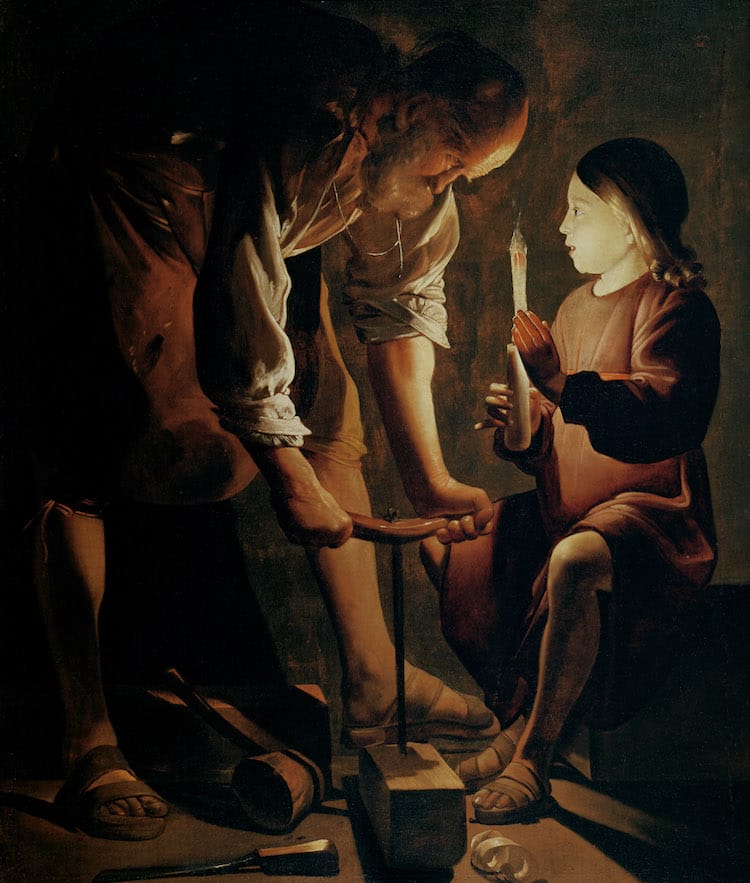
Georges de La Tour, “Joseph the Carpenter,” c. 1640 (Photo: The Louvre, Public domain)
|
Full Name
|
Georges de La Tour
|
|
Born
|
March 13, 1593 (Vic-sur-Seille, France)
|
|
Died
|
January 30, 1652 (Lunéville, France)
|
|
Notable Artwork
|
The Card Sharp with the Ace of Diamonds
|
|
Movement
|
Baroque
|
With a studio based in the Duchy of Lorraine, artist Georges de la Tour (1593–1652) was known as the “Painter to the King” and other French nobility. His distinct style featured dramatically-lit paintings with strong contrast and oftentimes illuminated by candlelight. Although he was probably inspired by Caravaggio, he differed in his approach by rendering simplified figures and less dynamic compositions.
Famous works of art: The Card Sharp with the Ace of Diamonds (c. 1620s), The Penitent Magdalene (1625–1650), Joseph the Carpenter (1642)
Artemisia Gentileschi (1593–1656)
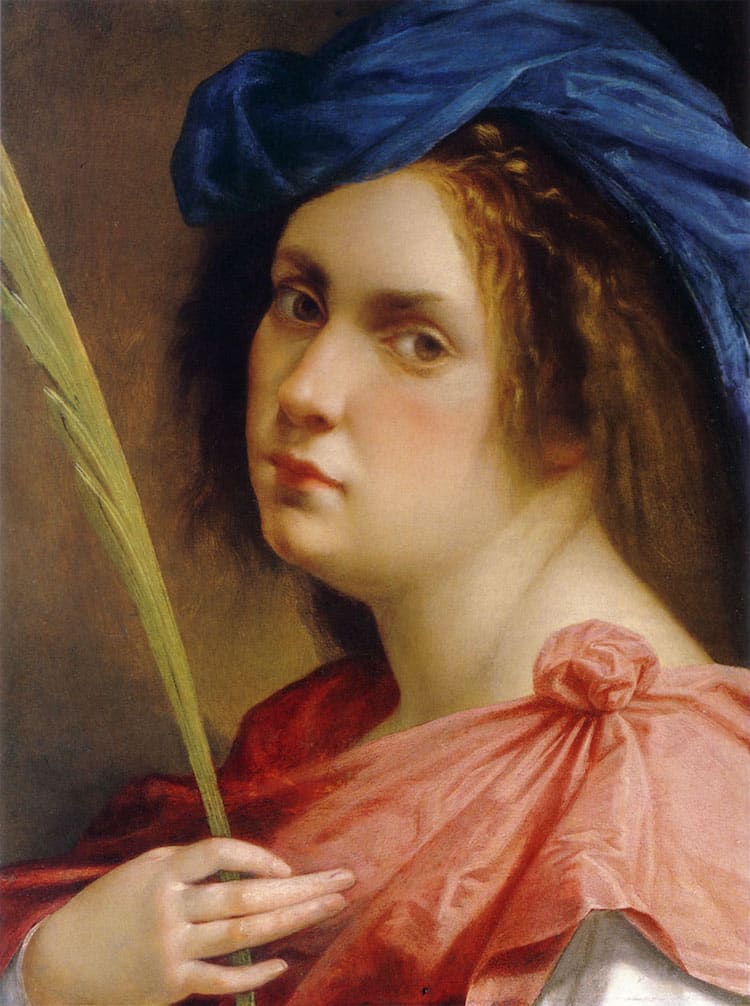
“Self-portrait as a Female Martyr,” ca. 1615 (Photo: Wikimedia Commons Public Domain)
|
Full Name
|
Artemisia Gentileschi
|
|
Born
|
July 8, 1593 (Rome, Italy)
|
|
Died
|
c. 1656 (Naples, Italy)
|
|
Notable Artwork
|
Judith Slaying Holofernes
|
|
Movement
|
Baroque
|
Born into an artistic family, Artemisia Gentileschi‘s (1593–1656) talents were recognized at a young age. In an era where female artists fought extreme adversity, she did not let her gender hold her back from depicting dramatic and oftentimes violent subject matter. She painted large-scale Biblical and mythological paintings, just like her male counterparts, and was the first woman accepted to the prestigious Fine Art Academy in Florence.
Her legacy is sometimes overshadowed by her biography, with her bloody depiction of Judith Slaying Holofernes often being interpreted through the lens of her rape at the hands of a fellow artist. However, her talent is undeniable and she continues to be recognized for her realistic depiction of the female form, the depth of her colors, and her striking use of light and shadow.
Famous works of art: Judith Slaying Holofernes (1614–1620)
Nicolas Poussin (1594–1665)
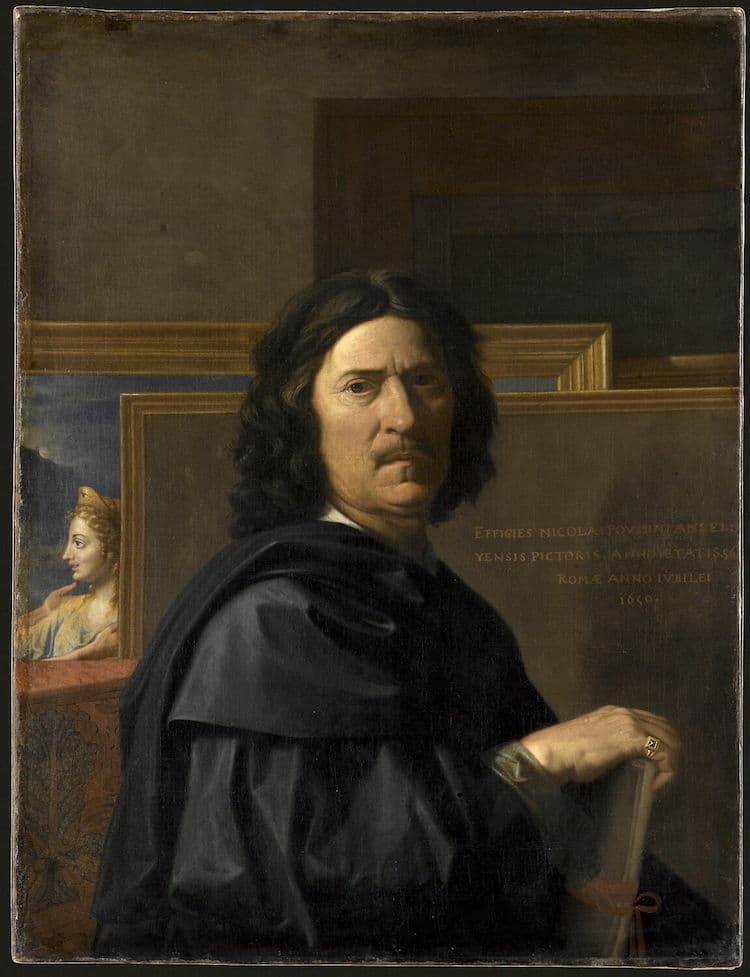
Nicholas Poussin, “Self-Portrait,” 1650 (Photo: Wikimedia Commons, Public domain)
|
Full Name
|
Nicolas Poussin
|
|
Born
|
June 1594 (near Les Andelys, France)
|
|
Died
|
November 19, 1665 (Rome, Italy)
|
|
Notable Artwork
|
The Abduction of the Sabine Women
|
|
Movement
|
Baroque
|
French artist Nicolas Poussin (1594–1665) cultivated a Baroque style based on bright colors, clarity, and line. He conveyed drama in his paintings by organizing numerous figures in active poses inside a well-defined space. As a result, many of his works possess a stage-like appearance. As for the subject matter, he gravitated toward classical and mythological scenes.
Famous works of art: The Abduction of the Sabine Women (1643)
Gian Lorenzo Bernini (1598–1680)
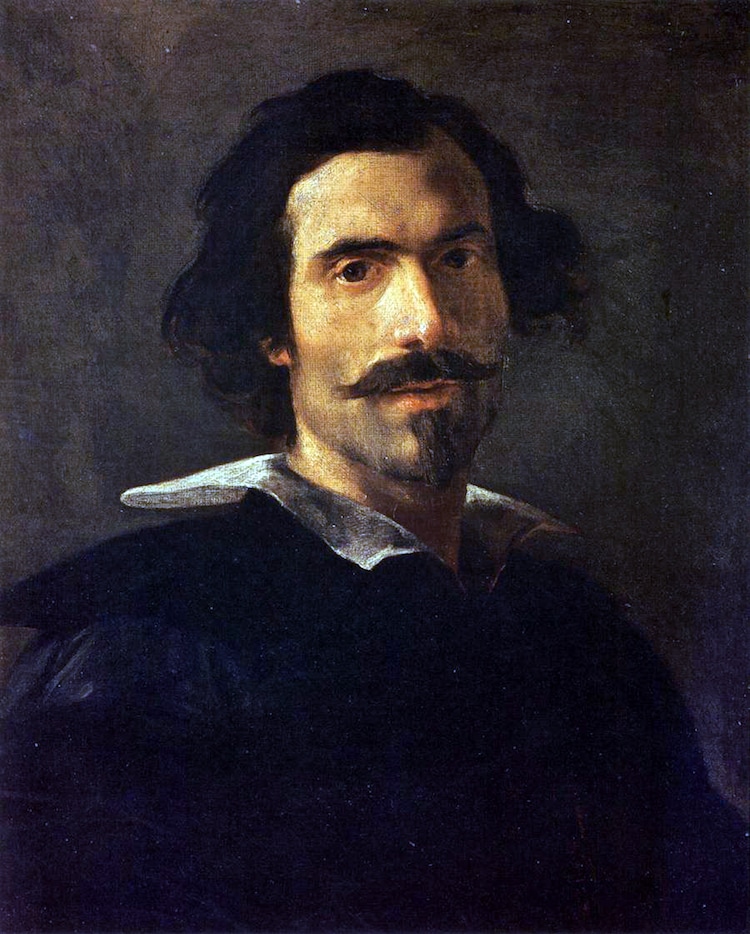
Gian Lorenzo Bernini, “Self-Portrait,” c. 1635 (Photo: Uffizi via Wikimedia Commons, Public domain)
|
Full Name
|
Gian Lorenzo Bernini
|
|
Born
|
December 7, 1598 (Naples, Italy)
|
|
Died
|
November 28, 1680 (Rome, Italy)
|
|
Notable Artwork
|
David, Apollo and Daphne
|
|
Movement
|
Baroque
|
Gian Lorenzo Bernini (1598–1680) was a prominent Italian sculptor, painter, and architect who is credited with developing the Baroque style of sculpture. Originally from Naples, he was regarded as a child prodigy. His father—a Mannerist sculptor—helped develop his talents and the pair worked together on several early commissions.
When Bernini relocated to Rome he caught the attention of Pope Paul V, who was impressed with the young artist’s talents. Soon enough, he found patronage under Cardinal Scipione, who was an avid art collector and patron of Caravaggio. This relationship helped fund some of Bernini’s most recognizable sculptural works. In addition to mastering marble, he was also an accomplished painter and successful architect.
Famous works of art: The Rape of Proserpina (1621–1622), Apollo and Daphne (1622–1625), David (1623–1624)
Francisco de Zurbarán (1598–1664)
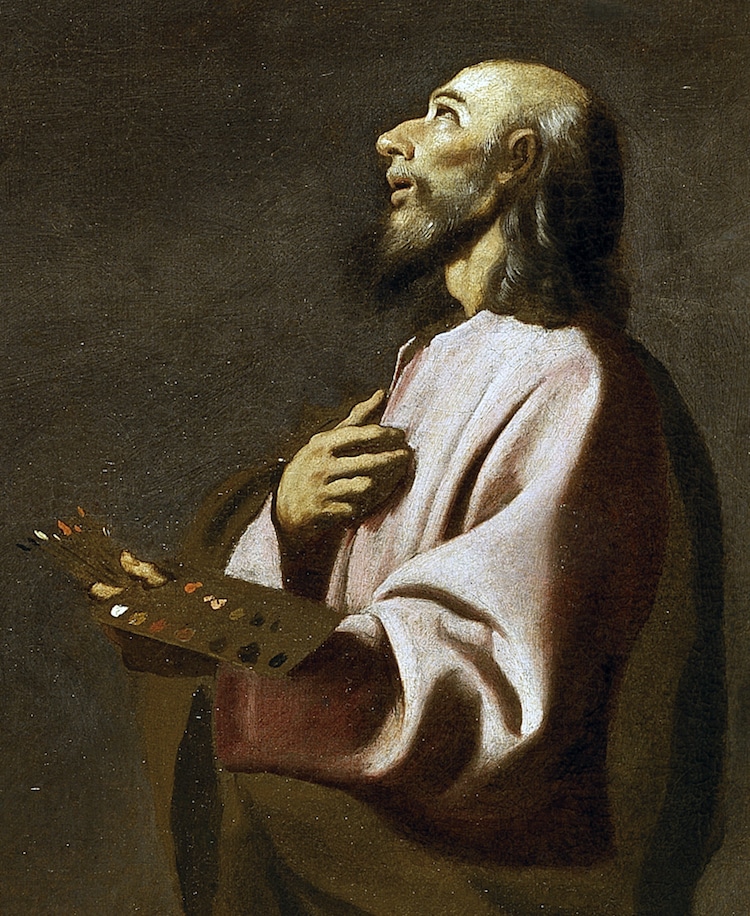
Francisco de Zurbarán, Detail of a possible self-portrait in “Saint Luke as a Painter Before Christ on the Cross,” 1635–1640 (Photo: Wikimedia Commons, Public domain)
|
Full Name
|
Francisco de Zurbarán
|
|
Born
|
baptized November 7, 1598 (Fuente de Cantos, Spain)
|
|
Died
|
August 27, 1664 (Madrid, Spain)
|
|
Notable Artwork
|
The Martyrdom of Saint Serapion
|
|
Movement
|
Baroque
|
Francisco de Zurbarán (1598–1664) was a leading Baroque painter known as the “Spanish Caravaggio.” Using a dramatic style steeped in intense contrasts of light and dark, his body of work focused mostly on religious depictions of monks, nuns, and martyrs. In addition, he based his realistic figures on live models, imbuing his paintings with an added sense of naturalism.
Famous works of art: The Martyrdom of Saint Serapion (1628)
Diego Velázquez (1599–1660)
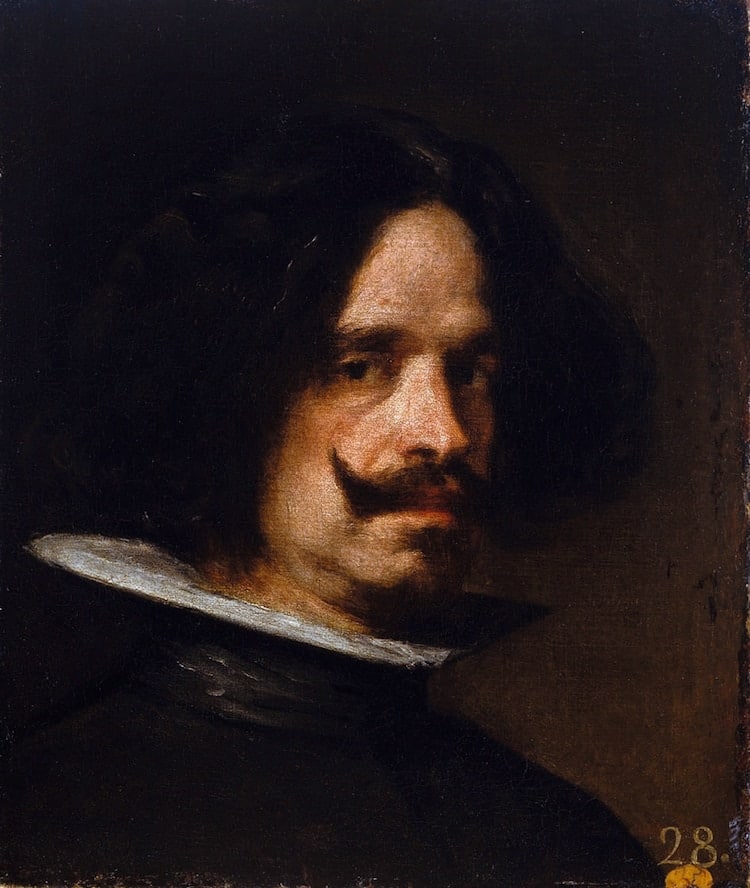
Diego Velázquez, “Self-Portrait,” c. 1640 (Photo: Wikimedia Commons, Public domain)
|
Full Name
|
Diego Rodríguez de Silva y Velázquez
|
|
Born
|
baptized June 6, 1599 (Seville, Spain)
|
|
Died
|
August 6, 1660 (Madrid, Spain)
|
|
Notable Artwork
|
Las Meninas
|
|
Movement
|
Baroque
|
Diego Velázquez (1599–1660) was a prominent Spanish painter during the Baroque movement and a major figure of the Spanish Golden Age—a period of artistic revival in Spain. Originally from Seville, he displayed a talent for art from a young age and apprenticed under a local painter in the town. In 1622, King Philip IV‘s favorite court painter died, and Velázquez—who was already well known—was commanded to put his foot forward and submit a portrait. Later, in 1624, the young artist moved to Madrid and became an official court painter, the first milestone in a long career with the royal Hapsburg family and many other people of power.
Famous works of art: Portrait of Innovent X (1650), Las Meninas (1656)
Rembrandt (1606–1669)
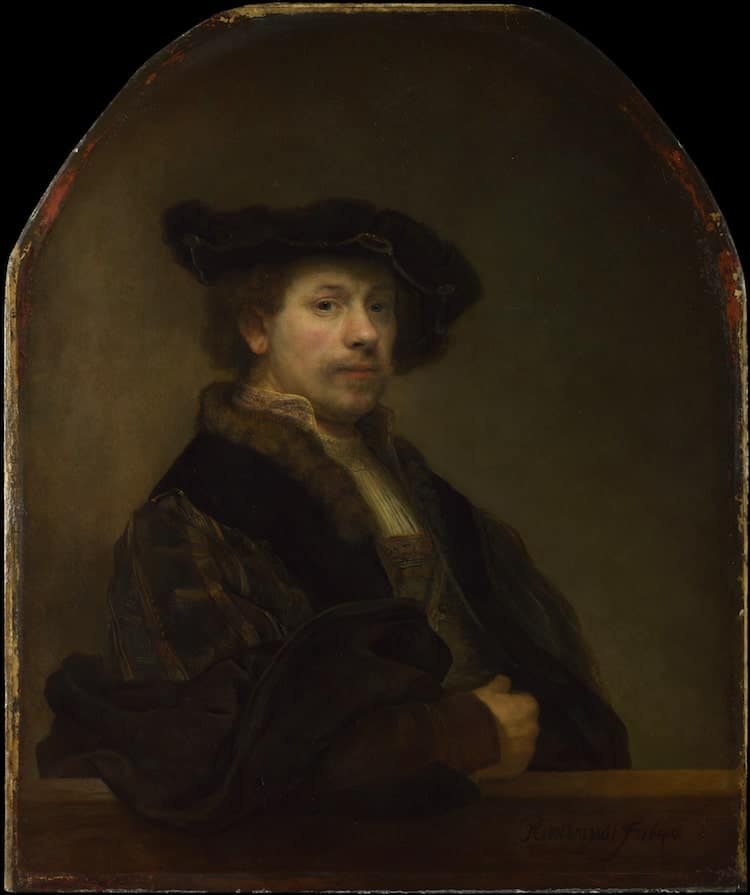
Rembrandt, “Self-Portrait at the Age of 34,” 1640 (Photo: National Gallery via Wikimedia Commons, Public domain)
|
Full Name
|
Rembrandt Harmenszoon van Rijn
|
|
Born
|
July 15, 1606 (Leiden, Netherlands)
|
|
Died
|
October 4, 1669 (Amsterdam, Netherlands)
|
|
Notable Artwork
|
The Night Watch
|
|
Movement
|
Baroque
|
Rembrandt Harmeszoon van Rijn (1606–1669) was an artist from the Dutch Republic (modern-day Netherlands), and one of the most prominent figures of the Dutch Golden Age. During this era, artists like Rembrandt and Vermeer found inspiration in Northern Renaissance painting techniques.
After finding initial success as a portrait painter, Rembrandt developed his practice to include a wide range of styles and subject matter. He documented his life through numerous self-portraits, created landscapes, genre scenes, allegorical and historical scenes, and paintings with biblical and mythological undertones.
Famous works of art: The Anatomy Lesson of Dr. Nicolaes Tulp (1632), The Night Watch (1642), Self-Portraits
Frequently Asked Questions
Who are the 3 famous Baroque artists?
Caravaggio, Bernini, and Velázquez are three famous Baroque artists.
What defines Baroque art?
Baroque art is defined by an emphasis on drama, movement, and lavishness, with the intention to inspire awe in the viewer.
Who is the greatest Baroque sculptor?
Italian artist and architect Gian Lorenzo Bernini pioneered the Baroque style in sculpture and is generally considered to be the most influential figure in this medium.
Related Articles:
Discover 20 Famous Paintings All Located at Paris’ Iconic Louvre Museum
Monumental Masterpieces: 10 of Art History’s Most Famous Large-Scale Paintings
11 Great Hispanic Artists Who Shaped Western Culture
How Chiaroscuro Emerged From the Dark to Become One of the Most Iconic Painting Styles
